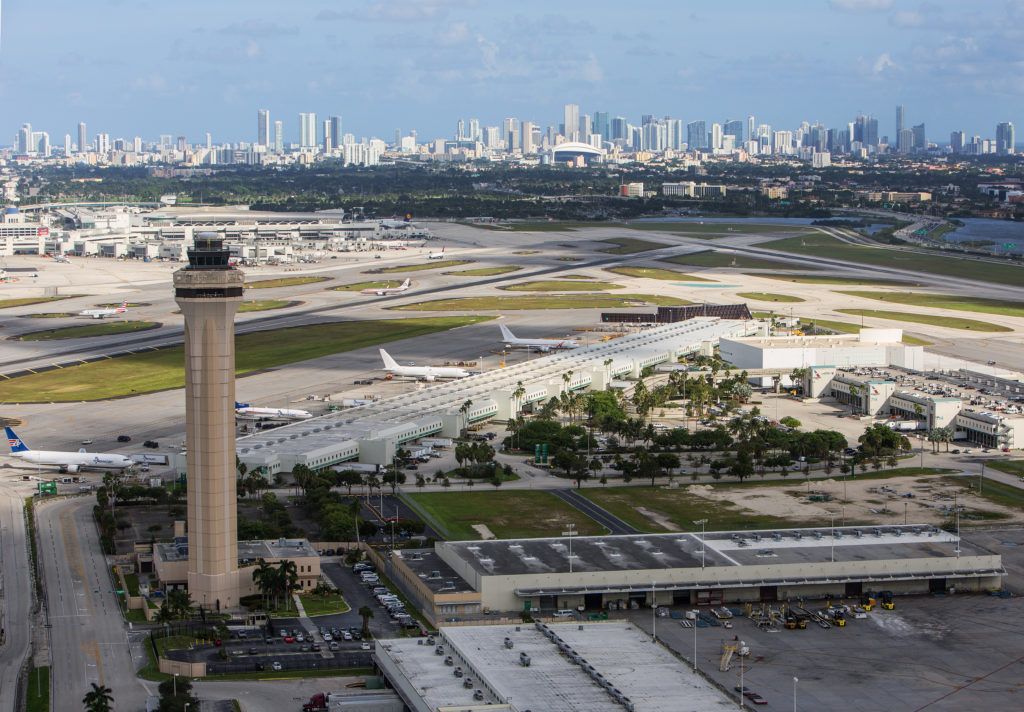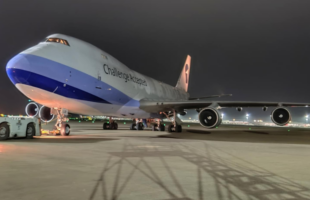

Miami International Airport saw record cargo volumes over the last 2 years, finishing in 12th spot of the world’s busiest cargo airports, according to recent data. In an interview, Payload Asia talks to Dimitrios “Jimmy” Nares, section chief for marketing at Miami-Dade Aviation Department, as he gives a rundown of the airport’s ambitions to grow its cargo business.
How did the airport perform in this first half?
Miami International Airport (MIA) had a record year for air freight in 2020 and surpassed that record by 18% in 2021 when it reached 2.75 million tons of air freight. This robust growth has continued in 2022. Halfway through the year, the airport has posted +3.25% year-over-year in air freight tonnage and is poised to have another record year for the third year in a row.
Who are the main operators that bring in cargo business to the airport?
The top four operators that bring in cargo business at MIA are Atlas, UPS, Tampa (Avianca) Cargo, and LATAM Airlines group. Midway through 2022, all four airlines recorded over 100,000 US tons of total freight and posted year-over-year growth in freight volumes: Atlas – 231,230 US tons (up 14.14%); UPS – 149,960 US tons (up 2.44%); Tampa or Avianca – 139,449 US tons (up 19.66%); and LATAM – 124,044 US tons (up 4.12%).
Which international cargo routes does MIA connect to? Has the airport been affected or benefitted with disruptions on certain routes?
MIA has an extensive cargo route network connecting 93 international cities. The airport is the true gateway to Latin America and the Caribbean with direct freighter service to 29 cities in South America, 8 cities in Central America, 7 cities in Mexico, and 33 cities in the Caribbean & The Bahamas, respectively. MIA accounts for 83% of all US air imports and 79% of all US air Exports with this region. Additionally, MIA has direct freighter service with 11 cities in Europe, the Middle East, and Africa, and with 5 cities in Asia. Since the pandemic, which led to worldwide disruptions in supply chains, MIA has benefited in terms of its cargo operations. In its record year for total freight in 2021, cargo had increased by 18% and cargo flights increased by 11.3%, respectively, over its previous record year in 2020.
What are the issues airports currently face on ground?
The aviation industry as a whole, along with supply chain partners and ground handlers, have been dealing with a tighter labor force since the pandemic began. At the same time, there has been increased demand for cargo capacity and cargo movement. Therefore, having adequate staffing levels to move cargo has become more challenging for the industry.
How has the pandemic influenced the airport’s overall direction in the near term and long haul?
With unprecedented growth in cargo at MIA in recent years, and with the airport nearing its cargo capacity, MIA’s capital improvement plans for its warehouse facilities have been accelerated.
What are the airport’s plans in terms of sustainability?
As a department of the Miami-Dade County government and the County’s overall commitment to reducing its carbon footprint, MIA is committed to sustainability initiatives. In 2020, MIA and Florida Power and Light Services (FPLS) completed Phase II of its Sustainability Project at MIA, one of the largest in the eastern United States. The project included the installation of $45 million worth of energy-efficient lighting, domestic water and heating, ventilation, and air-conditioning (HVAC) system upgrades. The project will save $3.2 million annually in utility costs, approximately 10% of the airport’s annual electrical cost. Phase II followed Phase I in 2018, which will generate a total of more than $40 million in energy and water savings through 2032. Projects such as these, in which MIA incorporates sustainability practices and solutions while it renovates its facilities, have helped the airport to receive a Sustainable Cargo Airport of the Year Award from another trade media source earlier in the year. In addition to reducing its carbon footprint, the energy savings will help MIA decrease its operating costs and lessen the financial impact on current and prospective airlines, which in turn supports the growth of MIA and the local economy.
Which technologies or infrastructure are you looking at for future investment?
Due to sustained growth in cargo at MIA and the airport nearing its cargo capacity, MIA will be investing in its cargo infrastructure. MIA’s current on-airport cargo capacity is estimated between 2.6 and 3.0 million annual tons of cargo, while it reached 2.75 million tons in 2021. MIA is forecasted to reach 3.7 million tons in 2031, and 4.9 million tons in 2041. In addition, the airport has no simple way to acquire additional land to accommodate its growth. The solution for MIA is to build a Vertical Integrated Cargo Community (VICC) facility which will be 5 stories high with 1.7 million square feet of cargo handling space, and capable of handling over 4 million tons of cargo when completed. VICC will advance the development of modern, high-technology new cargo infrastructure at MIA, and set a new standard for air cargo throughput efficiency, security, and resilience. The project will nearly double MIA’s cargo capacity and help the airport keep pace with forecasted growth in cargo for years to come.









